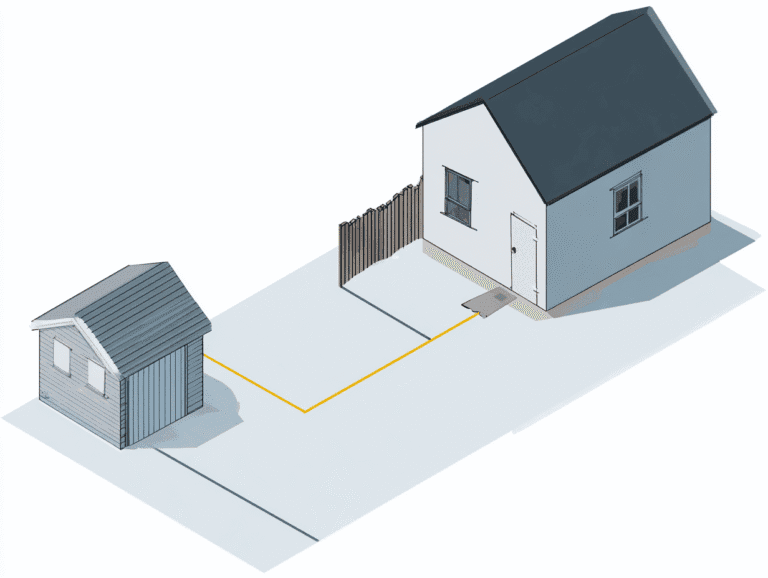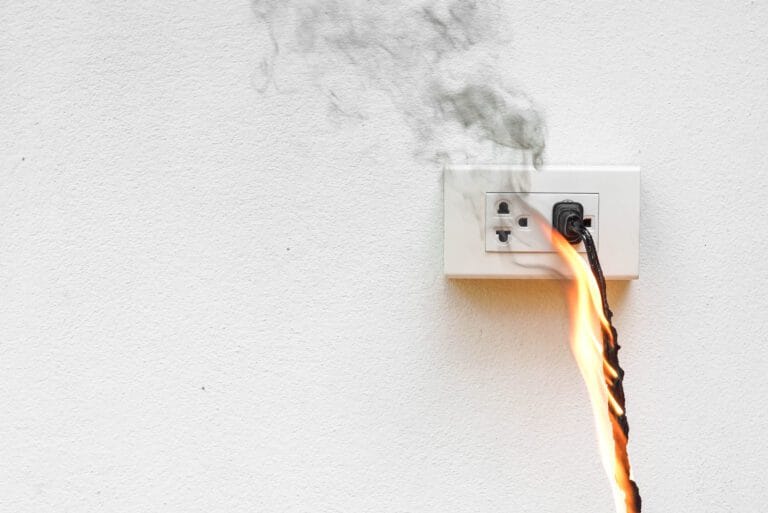Homeowners often face the frustrating issue of light bulbs burning out prematurely. Whether it’s in the living room, kitchen, or bedroom, frequent bulb burnout can lead to inconvenience, wasted money, and constant replacements. Understanding why light bulbs keep burning out fast is crucial for finding a lasting solution.
In this article, we will explore the various factors that contribute to early bulb failure. We’ll discuss everything you need to know, including electrical issues and environmental impacts. Additionally, we’ll provide practical tips to help prevent your light bulbs from burning out too quickly, ensuring longer-lasting illumination in your home.
Understanding the Causes of Early Bulb Burnout
High Voltage Stress on Bulbs
Excessive voltage levels can severely impact the lifespan of light bulbs. When a light bulb is subjected to higher voltage than it is designed for, it can cause the filament inside to heat up more than usual. This excessive heat leads to rapid deterioration and ultimately shortens the bulb’s life. For instance, if a bulb rated for 120 volts is exposed to 130 volts, it will burn out much faster due to increased stress on its components.
Impact of Loose Connections on Bulb Lifespan
Loose or improper socket connections are another common culprit behind frequent bulb burnouts. When a bulb is not securely fitted in its socket, it can lead to intermittent electrical contact. This inconsistency causes the bulb to flicker, which accelerates wear and tear on the filament. Each flicker is essentially a mini power surge that damages the bulb over time. Ensuring bulbs are firmly screwed into their sockets can prevent this issue and extend their usage period.
Risks of Incorrect Bulb Wattage Usage
Using bulbs with an incorrect wattage rating for their fixtures poses significant dangers. Fixtures are designed to handle specific wattage levels; exceeding these can result in overheating. Overheating not only shortens the bulb’s life but also risks damaging the fixture itself and potentially causing electrical fires. For example, placing a 100-watt bulb in a fixture rated for 60 watts will generate excessive heat and strain both the bulb and fixture. Always check the recommended wattage for your fixtures and adhere strictly to those guidelines.
Understanding these factors allows homeowners to address common issues that lead to early bulb burnout effectively. Proper voltage management, secure socket connections, and correct wattage usage are essential steps in ensuring longer-lasting lighting solutions in any home.
Electrical Issues That Can Cause Rapid Bulb Failure
Power Surges and Their Effect on Light Bulbs
Power surges are sudden increases in voltage that can be harmful to light bulbs. These surges often happen due to lightning strikes, faulty wiring, or the use of high-power appliances. When a power surge occurs, it sends a surge of electricity much higher than what the bulb is designed to handle. This excessive voltage can cause immediate damage to the filament or internal parts, resulting in early burnout.
Example: A homeowner may notice their bulbs frequently burning out after using a large appliance like a washing machine or air conditioner. The power demands from these appliances can create mini-surges throughout the electrical system, shortening the lifespan of any connected light bulbs.
Impact of Overloaded Circuits
Overloaded circuits are another common reason for rapid bulb failure. When too many devices are plugged into a single circuit, the electrical load exceeds safe limits. This overload causes overheating and can lead to frequent tripping of circuit breakers. The heat generated from an overloaded circuit can degrade the components inside light bulbs, causing them to burn out quicker than expected.
Example: In older homes with outdated wiring, plugging multiple electronics into one outlet may result in repeated bulb burnouts in nearby fixtures. Each time the circuit is overloaded, it compromises the integrity of the electrical flow, straining bulbs until they eventually fail.
Preventive Measures
- Install surge protectors: Protect your home’s electrical system by installing surge protectors to shield bulbs from unexpected voltage spikes.
- Distribute electrical load evenly: Avoid overloading circuits by spreading out your electrical devices across multiple outlets and circuits.
These measures can significantly reduce instances of premature bulb burnout caused by power surges and overloaded circuits.
The Role of Fixtures and Installation in Bulb Lifespan
Light bulbs keep burning out? The answer often lies in the basics: the fixture and its installation. Ensuring a secure and correct installation is not just a technicality—it’s a frontline defense against early bulb failure.
Importance of Proper Fixture Installation for Bulb Longevity
A bulb must be installed into its socket with a snug, firm fit. Any looseness leads to arcing—tiny sparks that may not be visible but steadily erode the bulb base and contacts. This process generates excess heat, damages sensitive components, and dramatically shortens bulb lifespan. Even the best-rated bulbs won’t last if the connection isn’t solid.
Common mistakes that undermine bulb longevity:
- Incomplete seating of the bulb in the socket
- Cross-threading in screw-in fixtures
- Failing to turn off power before replacing bulbs, risking electrical shorts
Effects of Faulty Fixtures on Light Bulb Lifespan
Worn-out or damaged fixtures are notorious for relentless bulb failures. Corroded contacts, warped sockets, or cracked housings disrupt the flow of electricity and expose bulbs to unstable conditions. Flickering lights or bulbs that die without warning signal deeper fixture issues.
Key signs your fixture is working against you:
- Discoloration or burn marks at the socket
- A loose or wobbly light assembly
- Persistent flickering even after changing bulbs
Faulty fixtures quietly sabotage even premium-quality bulbs. Each minor electrical hiccup chips away at performance and safety.
Focusing on the physical integrity of your lighting fixtures is as essential as choosing quality bulbs. Addressing these root issues directly impacts how long your lights will serve you reliably.
Environmental Factors Affecting Bulb Life Expectancy
Impact of Excessive Vibration on Incandescent Filaments
Excessive vibration can have a significant impact on the lifespan of incandescent bulbs. The filament inside these bulbs is particularly vulnerable to movement, which can cause it to break or become damaged. This is especially relevant in environments with ceiling fans, where constant motion can lead to early burnout. Ensuring that light bulbs in such settings are designed to withstand vibrations—such as those labeled “rough service”—can help mitigate this issue.
Detrimental Effects of Frequent Switching on CFL and LED Bulbs
Frequent switching poses another challenge to bulb longevity, affecting compact fluorescent lamps (CFLs) and light-emitting diode (LED) bulbs differently:
- CFLs: These bulbs are particularly sensitive to frequent on/off cycles. Each time they are switched on, a small electrical charge ignites the gas inside, leading to gradual wear over time. Consistent switching reduces their lifespan significantly.
- LEDs: While more durable than CFLs, LEDs also suffer from frequent switching. Rapid cycling can degrade the electronic components within the bulb, impacting its overall performance and longevity.
To optimize bulb lifespan, it’s advisable to minimize unnecessary switching and invest in bulbs designed for heavy-duty use if frequent cycles are unavoidable.
Why Ceiling Fan Light Bulbs Have a Higher Risk of Early Burnout
Light bulbs installed in ceiling fan fixtures face unique challenges due to constant movement and vibration. This persistent motion can cause the filament inside traditional incandescent bulbs to weaken and break, leading to frequent burnouts. If you notice that your ceiling fan light bulb keeps burning out, it’s likely that the vibration is negatively impacting the filament’s durability.
Recommendations for more durable bulb types:
- LED Bulbs: LEDs are less susceptible to damage from vibration because they do not have a fragile filament. They are an excellent choice for ceiling fans.
- Rough Service Rated Bulbs: Designed specifically for environments where bulbs are subjected to shocks and vibrations, these bulbs have reinforced filaments and thicker glass.
- CFL Bulbs: Though more resistant than incandescent bulbs, CFLs may still be affected by frequent movement. Always opt for high-quality brands that offer additional durability features.
Selecting bulbs designed to withstand the conditions typical of ceiling fan fixtures can significantly extend their lifespan, reducing instances where light bulbs keep blowing out. Pay attention to product specifications and choose those marked as suitable for high-vibration environments to avoid the frustration of light bulbs going out frequently.
For more tailored solutions regarding your lighting needs, consider consulting with a professional residential electrician who can provide expert advice on selecting the right type of light bulbs for your ceiling fans. Alternatively, if you’re dealing with commercial properties and require emergency lighting solutions, reaching out to a qualified commercial electrician would be beneficial.
LED Light Bulbs: Understanding Their Longevity Benefits And Limitations
When comparing LED and incandescent bulb durability, LEDs stand out for their impressive lifespan. While standard incandescent bulbs typically last about 1,000 hours, most quality LED bulbs reach between 15,000 and 50,000 hours under normal conditions. This longevity is not just a marketing claim—LEDs generate light with far less heat and wear on internal components. That means you’ll replace bulbs less frequently, slash waste, and enjoy consistent lighting for years.
LEDs are engineered to handle frequent switching and resist damage from vibration better than older technologies. Their robust construction makes them perfect for homes looking to reduce maintenance and energy costs. Yet many homeowners are frustrated when new light bulbs keep burning out—even high-rated LEDs sometimes fail long before their expected lifespan.
Factors Affecting LED Lifespan
Several factors can undermine the durability advantage of LEDs:
- Voltage Fluctuations: Sensitive electronics inside LEDs are vulnerable to surges or unstable voltage. If your LED light bulbs keep burning out, it’s worth checking for electrical irregularities in your home.
- Incompatible Dimmers: Using old dimmer switches with modern LEDs can cause flickering and overheating. Not all dimmers are designed for low-wattage, energy-efficient lighting.
- Poor Fixture Ventilation: LEDs produce less heat than incandescents but still require some airflow to avoid overheating. Closed fixtures or insulation around the bulb can shorten its life.
- Defective or Low-Quality Products: Not every LED is created equal. Off-brand or bargain bulbs may use substandard components that can’t stand up to daily use.
If you notice light bulbs keep burning out rapidly across different rooms or fixtures, the root cause often lies beyond just the bulb itself. Addressing installation practices and electrical health is essential for getting the full value from your investment in modern lighting solutions.
A closer look at fixture compatibility and installation habits helps ensure your next LED performs as promised.
Practical Tips To Prevent Early Burnout In Your Light Bulbs
Preventing early burnout in light bulbs starts with proper usage and installation. Here are some crucial tips for homeowners:
Proper Usage Guidelines for Different Types of Light Fixtures
- Correct Wattage: Always use bulbs with the appropriate wattage rating for your fixtures. Exceeding the recommended wattage can cause overheating and shorten the bulb’s lifespan.
- Secure Socket Connections: Ensure bulbs are securely screwed into their sockets. Loose connections can lead to flickering and increased wear on the filament.
- Quality Fixtures: Invest in high-quality fixtures that provide a stable environment for bulbs. Cheap or worn-out fixtures may contribute to frequent burnouts.
Installation Practices
- Avoid Over-tightening: While it’s important to secure bulbs, over-tightening can damage the bulb base or socket, leading to electrical issues.
- Regular Maintenance: Periodically inspect and clean your fixtures to ensure they remain in good condition. Dust and debris can interfere with proper electrical contact.
Environmental Considerations
- Vibration Management: In areas prone to vibration, such as ceiling fans, use bulbs rated for rough service or LED types designed to withstand movement.
- Switching Habits: Minimize frequent on/off switching, especially with CFL and LED bulbs. These actions can reduce their longevity.
Implementing these practical measures ensures optimal performance and longevity for your light bulbs, reducing the frustration of premature failures.
Upgrading Electrical Components For Improved Bulb Performance And Longevity
Upgrading electrical components is vital for ensuring optimal performance and longevity of light bulbs. One significant upgrade involves replacing old dimmer switches with newer models designed specifically for use with energy-efficient lighting technologies like LEDs and CFLs.
Benefits of Installing Compatible Dimmer Switches With Modern LEDs/CFLs:
- Enhanced Performance: Traditional dimmer switches are often incompatible with modern LEDs and CFLs, causing flickering or humming noises. Newer dimmer switches are tailored to handle the specific electrical demands of these bulbs, ensuring smooth operation and stable lighting conditions.
- Extended Bulb Lifespan: Using incompatible dimmers can lead to premature bulb failure due to excessive strain. Modern dimmers regulate voltage more efficiently, preventing damage and extending the lifespan of your bulbs.
- Improved Energy Efficiency: Modern dimmer switches contribute to better energy management. They allow precise control over lighting levels, reducing unnecessary power consumption and lowering electricity bills.
Investing in compatible dimmer switches is a proactive step towards maximizing bulb performance and longevity. It’s a straightforward upgrade that yields substantial benefits for homeowners seeking reliable, efficient lighting solutions.
Signs That Indicate You Need Professional Help With Electrical Issues Causing Frequent Bulb Burnouts
Identifying repeated patterns suggesting underlying electrical problems can be crucial in preventing further damage and ensuring safety. Multiple bulbs burning out rapidly across different fixtures is a clear indicator that there might be an issue with your home’s electrical system.
Key signs to watch for:
- Rapid bulb burnout: If you notice that light bulbs keep burning out within days or weeks of installation, this is a sign that warrants immediate attention.
- Multiple fixture failures: When bulbs in various fixtures throughout your home burn out simultaneously, it suggests a systemic problem rather than isolated incidents.
- Flickering lights: Persistent flickering, especially when combined with quick bulb burnout, can indicate voltage fluctuations or poor connections. This could also be one of the 5 warning signs your home’s wiring is secretly unsafe, such as tripping breakers or hot outlets.
- Burn marks or melted sockets: Visible signs of damage around the fixtures such as burn marks or melted plastic are serious indicators of electrical issues needing professional intervention.
It’s vital to address these concerns promptly. A qualified electrician can diagnose and resolve underlying problems effectively, ensuring optimal performance and longevity of your light bulbs. Prioritizing safety and efficiency leads to a more reliable and durable lighting solution for your home.
FAQs (Frequently Asked Questions)
Why do my light bulbs keep burning out quickly?
Light bulbs can burn out prematurely due to several factors including high voltage stress, loose connections, incorrect wattage usage, power surges, circuit overloads, and environmental conditions such as excessive vibration or frequent switching. Identifying and addressing these issues can help extend bulb lifespan.
How does high voltage affect the lifespan of light bulbs?
High voltage levels put excessive strain on light bulbs, causing their filaments to deteriorate faster than normal. This stress leads to early bulb failure and frequent burnout, especially if the electrical system is not properly regulated.
Can ceiling fans cause light bulbs to burn out faster?
Yes, ceiling fan vibration can negatively impact filament durability in incandescent bulbs and cause premature burnout. Using more durable bulb types like LED or rough service rated bulbs designed for ceiling fans can help mitigate this issue.
What role do fixtures and installation play in preventing early bulb failure?
Proper fixture installation ensures secure socket connections and prevents electrical issues that contribute to bulb burnout. Faulty or worn-out fixtures can create poor contact or electrical stress, leading to frequent light bulb failures.
Why are LED light bulbs considered more durable but still sometimes burn out early?
LED bulbs generally last longer than incandescent types due to their design and efficiency. However, premature LED failure can occur because of underlying issues such as incompatible dimmer switches, power surges, or poor-quality products. Ensuring proper installation and compatible components is key.
When should I seek professional help for frequent light bulb burnouts?
If you notice repeated patterns of multiple bulbs burning out rapidly across different fixtures, it may indicate underlying electrical problems like circuit overloads or wiring issues. In such cases, consulting a qualified electrician is recommended to diagnose and resolve these concerns safely.










